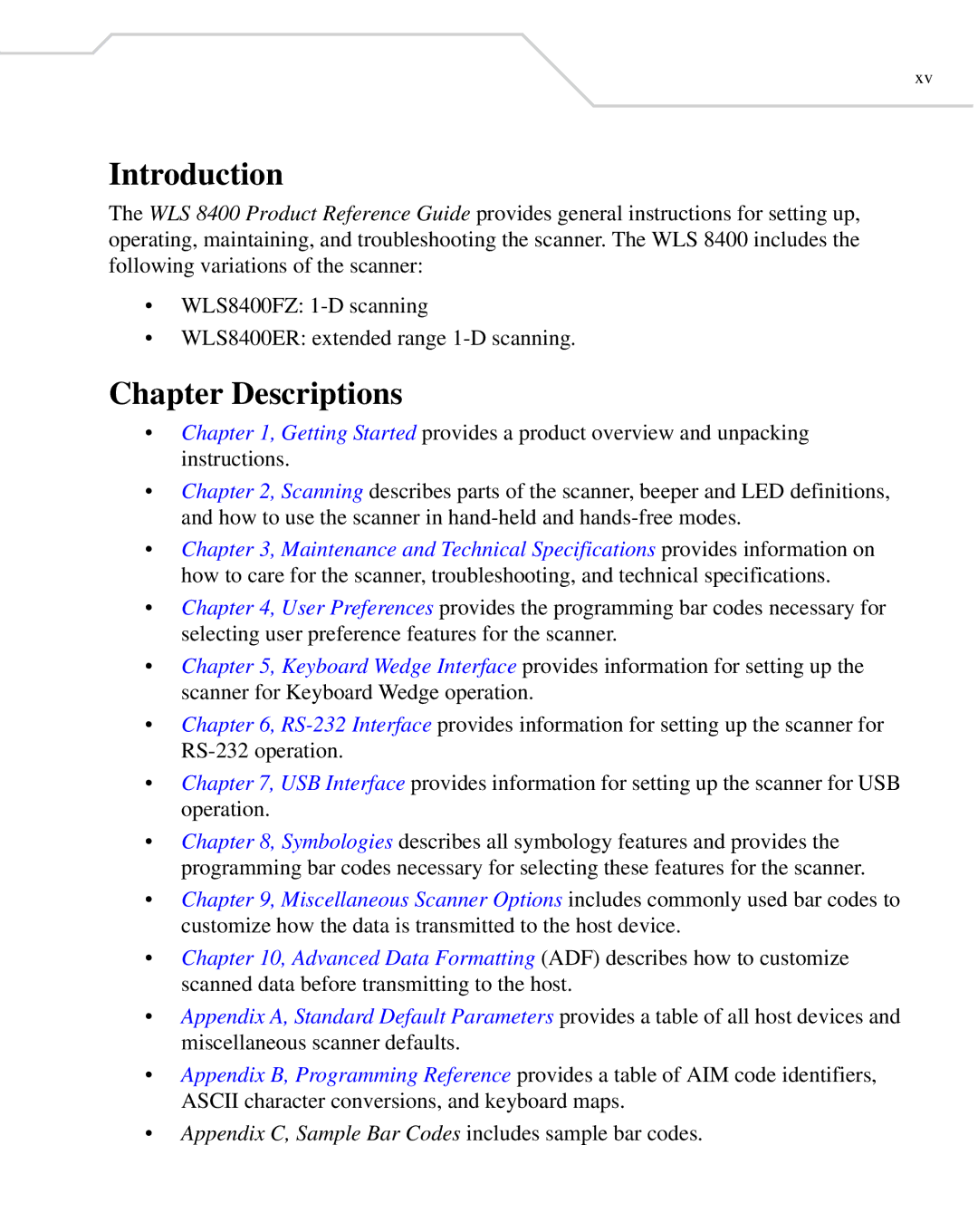
xv
Introduction
The WLS 8400 Product Reference Guide provides general instructions for setting up, operating, maintaining, and troubleshooting the scanner. The WLS 8400 includes the following variations of the scanner:
•WLS8400FZ:
•WLS8400ER: extended range
Chapter Descriptions
•Chapter 1, Getting Started provides a product overview and unpacking instructions.
•Chapter 2, Scanning describes parts of the scanner, beeper and LED definitions, and how to use the scanner in
•Chapter 3, Maintenance and Technical Specifications provides information on how to care for the scanner, troubleshooting, and technical specifications.
•Chapter 4, User Preferences provides the programming bar codes necessary for selecting user preference features for the scanner.
•Chapter 5, Keyboard Wedge Interface provides information for setting up the scanner for Keyboard Wedge operation.
•Chapter 6,
•Chapter 7, USB Interface provides information for setting up the scanner for USB operation.
•Chapter 8, Symbologies describes all symbology features and provides the programming bar codes necessary for selecting these features for the scanner.
•Chapter 9, Miscellaneous Scanner Options includes commonly used bar codes to customize how the data is transmitted to the host device.
•Chapter 10, Advanced Data Formatting (ADF) describes how to customize scanned data before transmitting to the host.
•Appendix A, Standard Default Parameters provides a table of all host devices and miscellaneous scanner defaults.
•Appendix B, Programming Reference provides a table of AIM code identifiers, ASCII character conversions, and keyboard maps.
